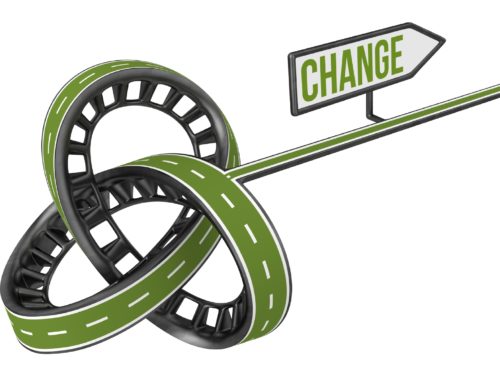The future of business was foreshadowed in 1984. Not the book 1984 by George Orwell although you might make that case as well. The future we’re talking about appeared in a book titled Silicon Valley Fever written by Ev Rogers and Judith Larson.
In their book, Rogers and Larson describe the earliest forms of collaboration that led to incredible innovation. One example was the Homebrew Computer Club.
The Homebrew Computer Club was a group of hobbyists and electronic enthusiasts that met from 1976 to 1985. Its bi-weekly meetings included many of the early computer industry pioneers, and Steve Wozniak even used the forum to give away the schematics of the Apple I computer. Rogers and Larson suggested that this access to networks of smart people who share your interests and are willing to help you succeed was crucial in Silicon Valley’s success.
Fast Forward to Today
Cross-functional project teams, user groups, and beta testing your organization uses today are a start. They, also, don’t create the same connection as those meet-in-someone’s garage networks of the 1980’s Silicon Valley.
Those informal groups still exist, however. Smart people will always find ways to make their lives easier.
Internally, they appear as clandestine stairwell meetings or online conversations that don’t include you.
Externally, your customers use on-line forums to figure out how to make your product better suit their needs and complain about your lack of support. They may even reach out to one or two trusted people within your organization for work arounds and hacks.
Legitimizing and accelerating those networks is crucial for creating new opportunities and avoiding disruption. Kristin McPeak, Design Operations Director at PointSource, a Globant Company says that reaching across traditional lines and boundaries to collaborate has five key benefits:
- Enables you to solve complex problems that require more than one skill set, person, or department.
- Promotes innovation by assembling ideas and perspectives that have never before been connected.
- Increases velocity by anticipating downstream problems early.
- Prevents rework by surfacing limitations and potential problems before the work begins.
- Shares ownership to create buy-in and commitment.
Despite the obvious benefits – and the words innovation and teamwork appearing in your values statement – a report from PointSource says that only 30 percent of departments always reach across their organizational boundaries to solve problems. It is a safe bet that your organization isn’t collaborating at the level you need externally if it isn’t doing so internally.
Here are three ideas on which you can work right now to accelerate collaboration.
Create a shared, secure digital ecosystem that drives innovation and efficiency.
What would be different if you never had to worry about devices, applications, or computer systems working seamlessly together? What if your digital ecosystem allowed immediate collaboration between you and your customers or between your customers and their customers?
Louis Hernandez, Jr., author of The Storytellers Dilemma and CEO of Avid, has a vision for that world. He’s created it for his customers with a set of cloud-based tools that allows anywhere any time collaboration by his customers.
For Hernandez, that’s only the first step. He believes that the ultimate solution in his industry is a shared services platform into which everyone in the value chain can tap. An interim step would mean a common commitment to compatibility so that individual tool preferences can communicate.
What’s your solution to connect your customers with you, and more importantly, with each other? Creating a shared, secure digital ecosystem means that innovation doesn’t require meeting in someone’s garage.
Capture the big and small picture.
To accelerate collaboration, you must create opportunities to simultaneously see the world on a global and granular level. Brian Solis wrote about it this way: “Through a telescope, we bring the world closer. Through a microscope, we see what was previously invisible to the naked eye.”
Alyson Griffin, Vice President of Global Marketing at Intel, sees New Lab, an innovation center in Brooklyn, as just such an opportunity. Intel, in partnership with Lenovo and several other companies, has gathered a group of hardware centric designers, entrepreneurs, and designers under a single roof to push the boundaries of what is possible through technology.
The opportunity for young innovators to access what’s possible with the latest technology supplied by global innovators is reminiscent of the discussions that must have taken place at the Homebrew Computer Club. Likewise, Intel’s ability to interact at the ground level with companies who will potentially change the world is a crucial advantage for them.
It is no wonder that Griffin says, “We love learning from the ‘cool kids’ in Brooklyn.”
Recreate the culture of collaboration.
In the early days of your business, everyone did whatever it took to succeed. No one was scared or offended by someone saying, “I’ve got an idea to make your idea better.”
Then you became successful. Organizational charts, job descriptions, and competition for budget dollars followed. A report by PointSource stated that 76 percent of organizations believe that their departments are in competition for budgets and resources. Does that describe you?
Kristin McPeak says that the restoring (or creating) a culture that values cross-collaboration must occur simultaneously from the top and the bottom of the organization. A missing piece, she believes, is the failure to create a groundswell for collaboration:
“Stories must be told and successes must be celebrated. Management must be open to those stories being told, but we need to make it possible for everyone to see the benefits of cross-disciplinary collaboration.”
In the end, the culture always wins. A great technology ecosystem and opportunities to experience the world differently are, at best, tweaks to the process if the culture promotes protecting yourself.
Some of the greatest technology advancements came about because people met in a garage two times per month to exchange ideas. Isn’t it time that you accelerated true collaboration in your organization?
Randy Pennington is an award-winning author, speaker, and leading authority on helping organizations achieve positive results in a world of accelerating change. To bring Randy to your organization or event, visit www.penningtongroup.com , email info@penningtongroup.com, or call 972.980.9857.





